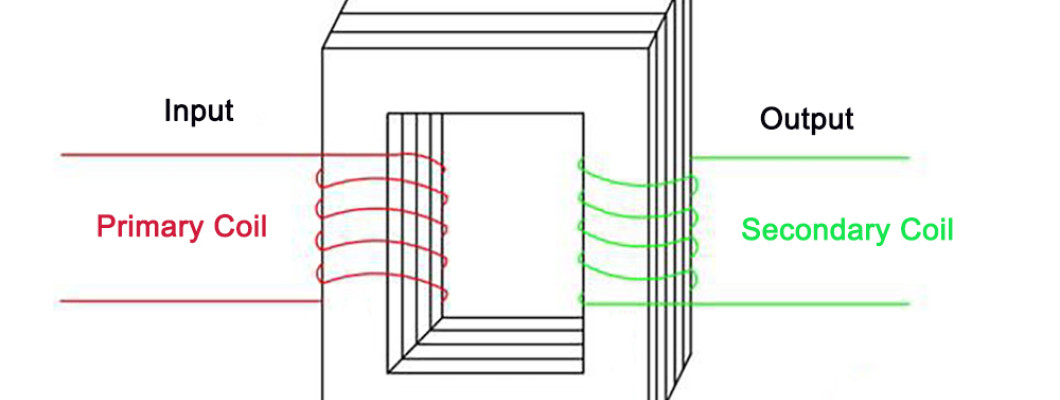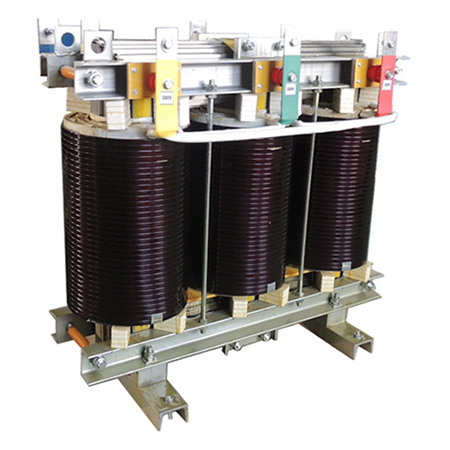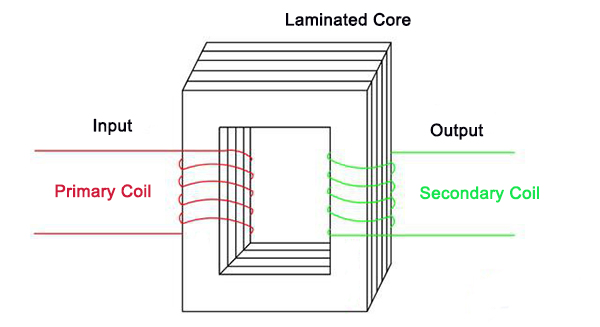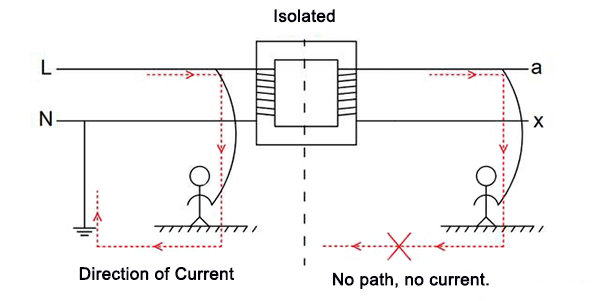
Isolation transformer is a transformer in which the primary winding and the secondary winding are electrically isolated, it has a ratio of 1 to 1 between them generally and both input voltage and output voltage are also equal. According to the transformation ratio formula of the transformer: U1/U2=N1/N2, I1/I2=N2/N1, it can be known that the voltage and current of the primary side and the secondary side of the 1 to 1 isolation transformer are the same. Thus, they are also called 1 to 1 isolation transformer. To put it simply, the isolation transformer is composed of input and output coils with the same number of turns and the input and output coils are not connected together and only transmit electrical energy through the magnetic field.

Isolation transformers generally have two categories according to their purposes. The first type is a safety power transformer, which can isolate the power supply and avoid electric shock accidents. The other one is to isolate electromagnetic interference signals and such a transformer is widely used in electronic circuits to suppress noise and electromagnetic interference.
Isolation Transformer Construction
If AC voltage is applied to the primary coil of the transformer, the primary winding will produce alternating current. And the alternating current will generate alternating magnetic flux in the iron core and pass it to the secondary coil through the iron core. According to the principle of electromagnetic induction, the changing magnetic flux will induce an electromotive force through the coil, and the magnitude of the electromotive force is proportional to the number of turns of the coil. Since the number of turns of the primary coil is equal to the number of turns of the secondary coil, both input and output voltages are also equal.



Leave a Comment